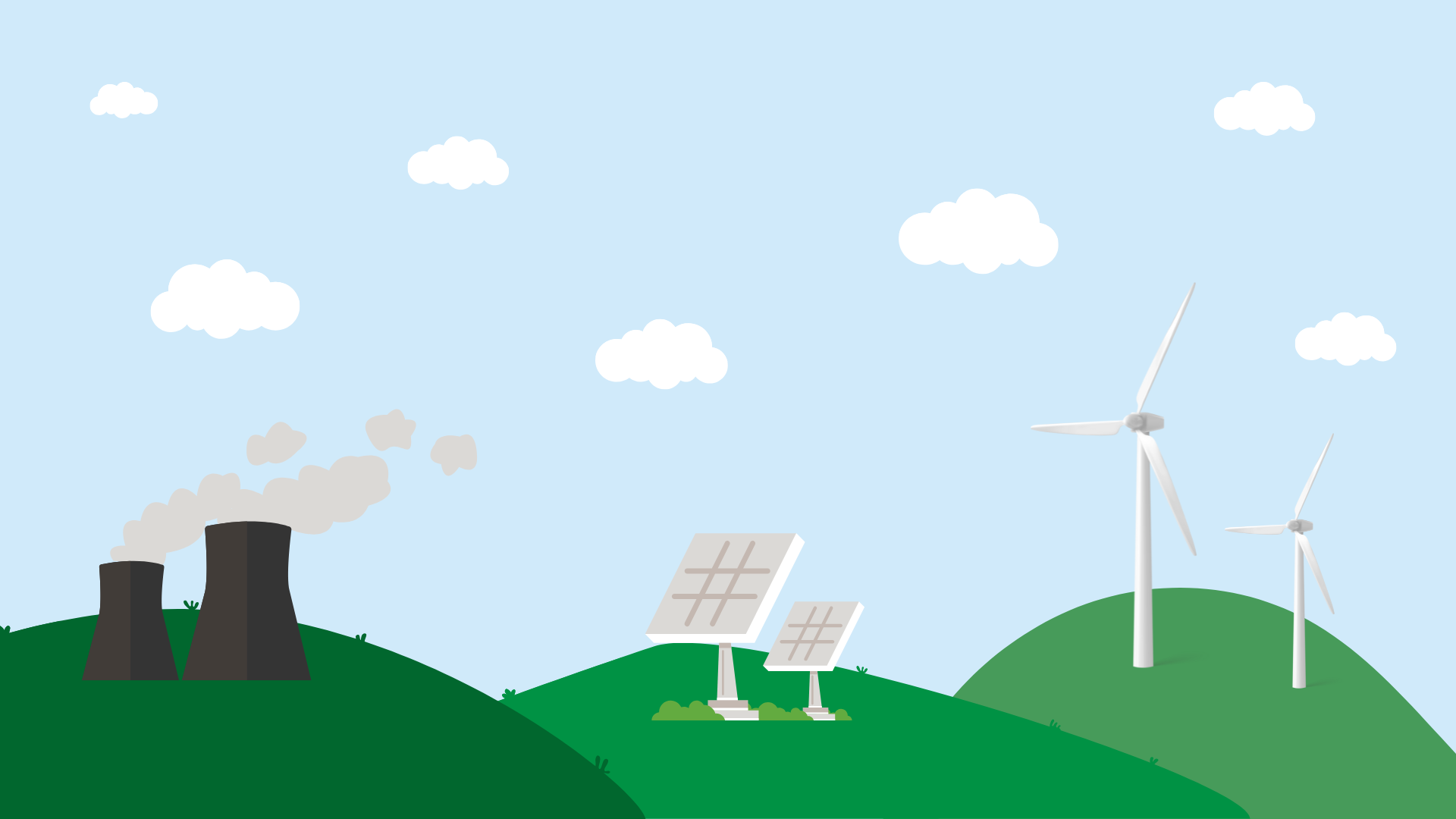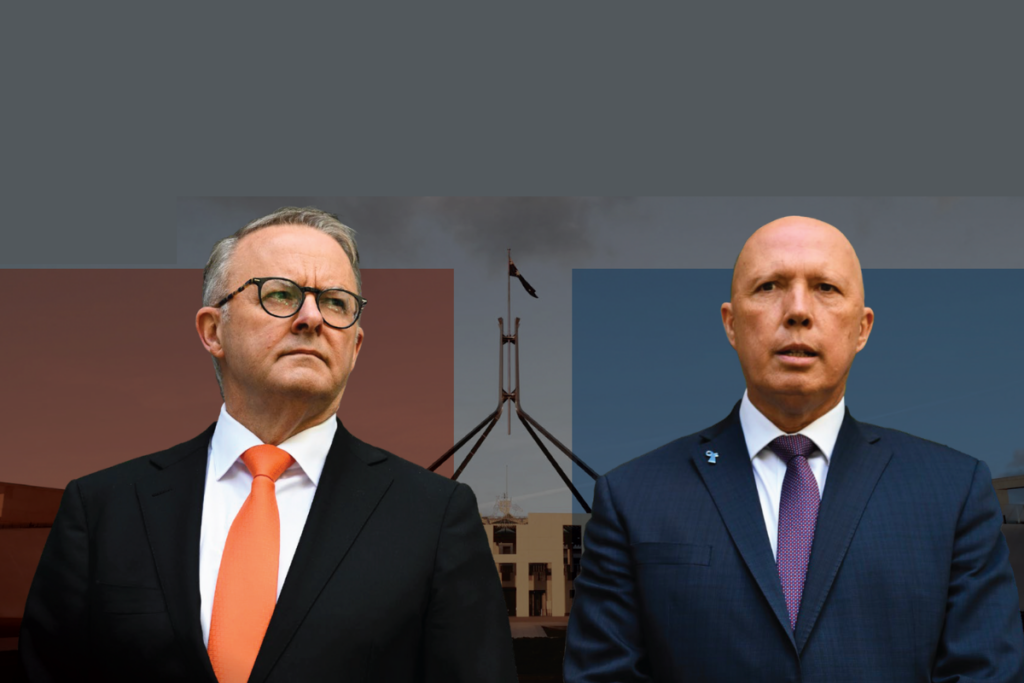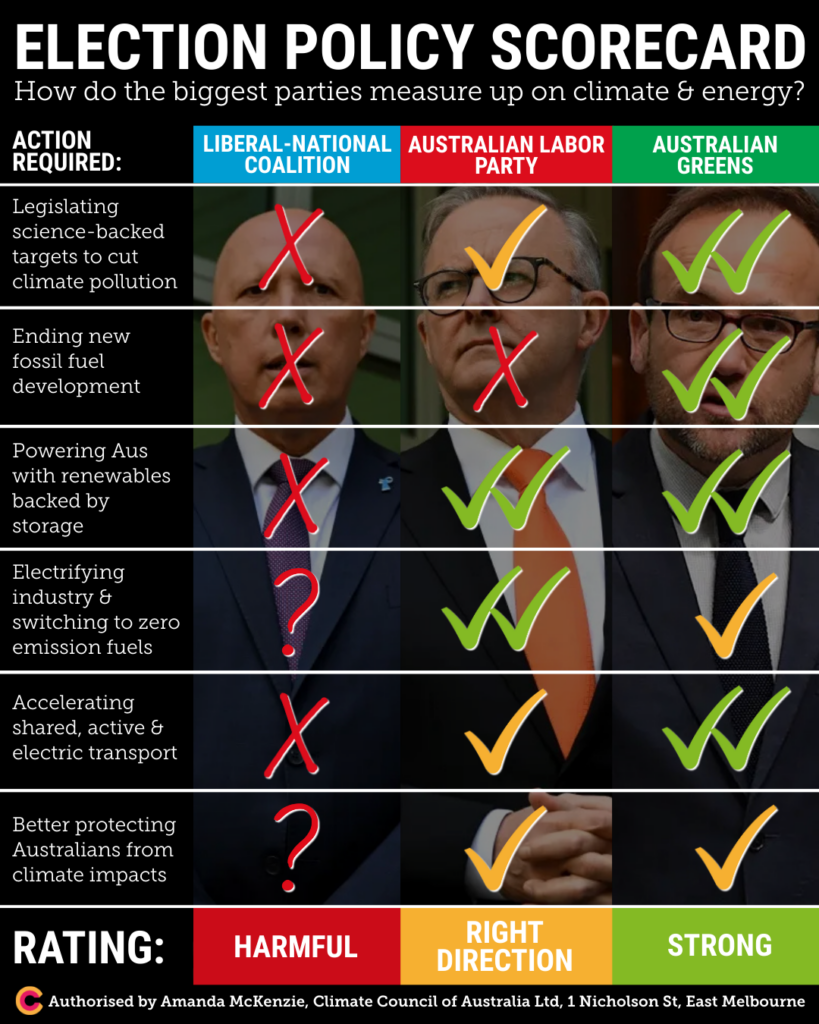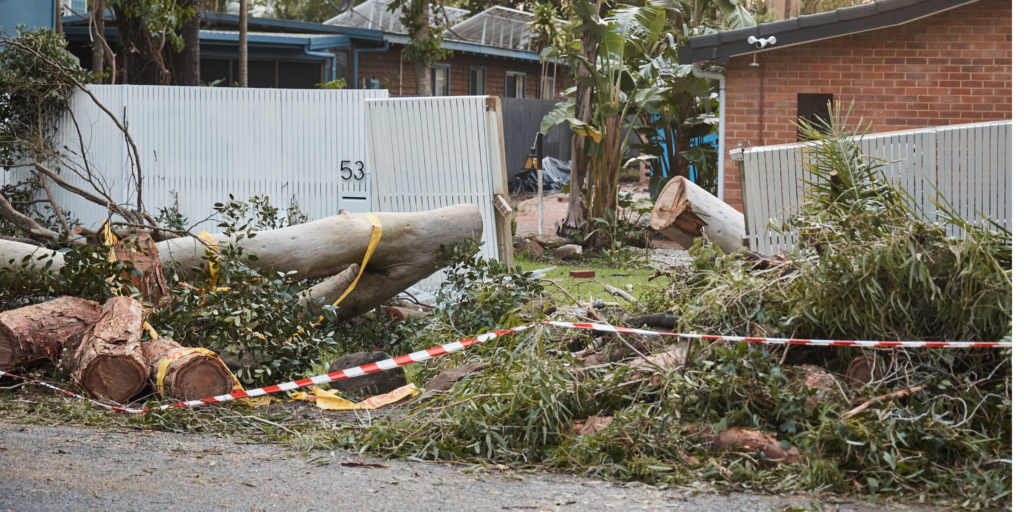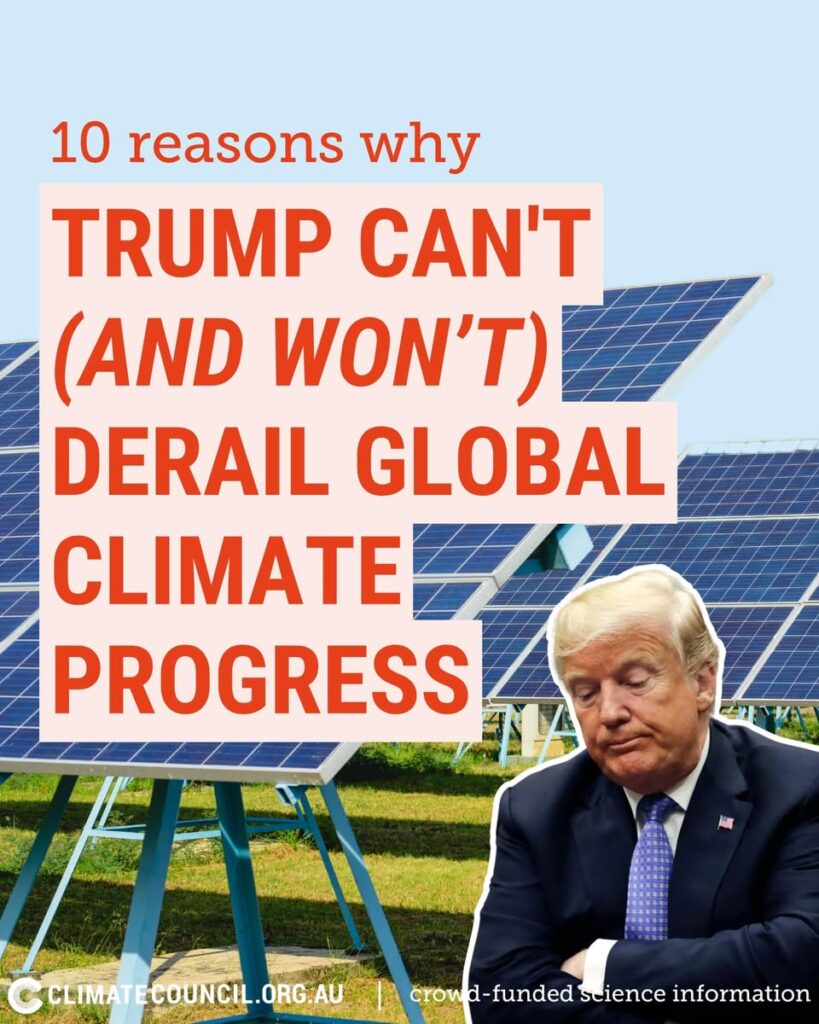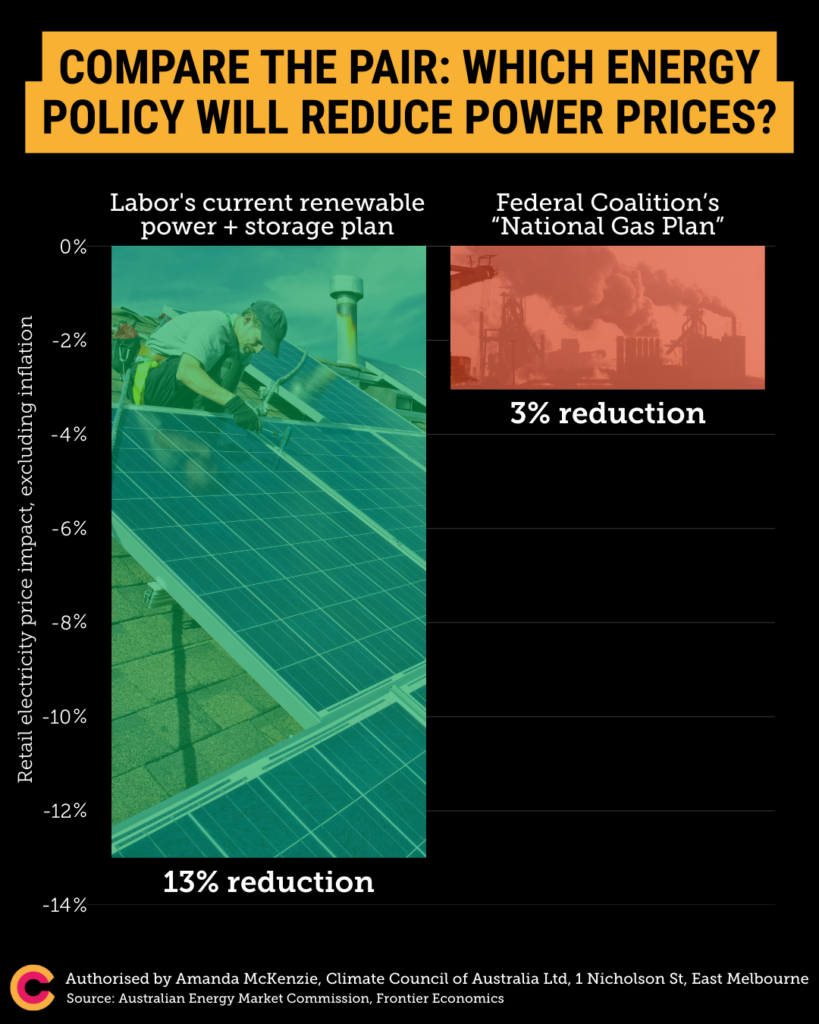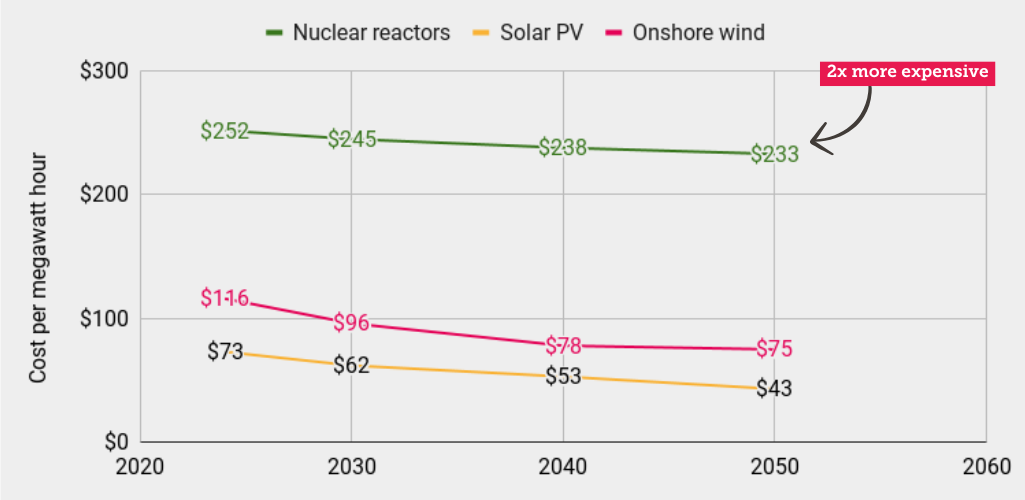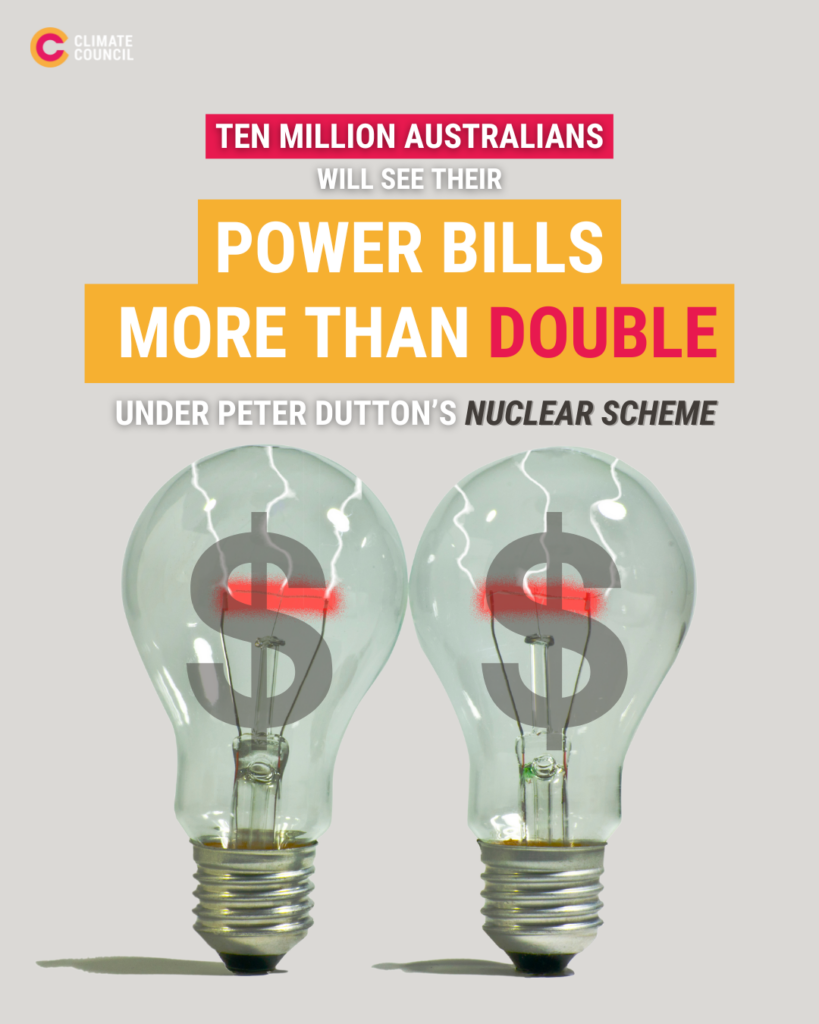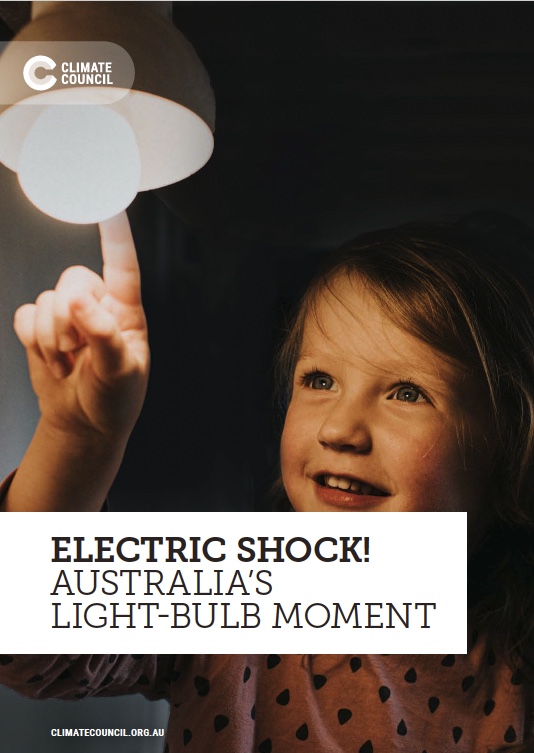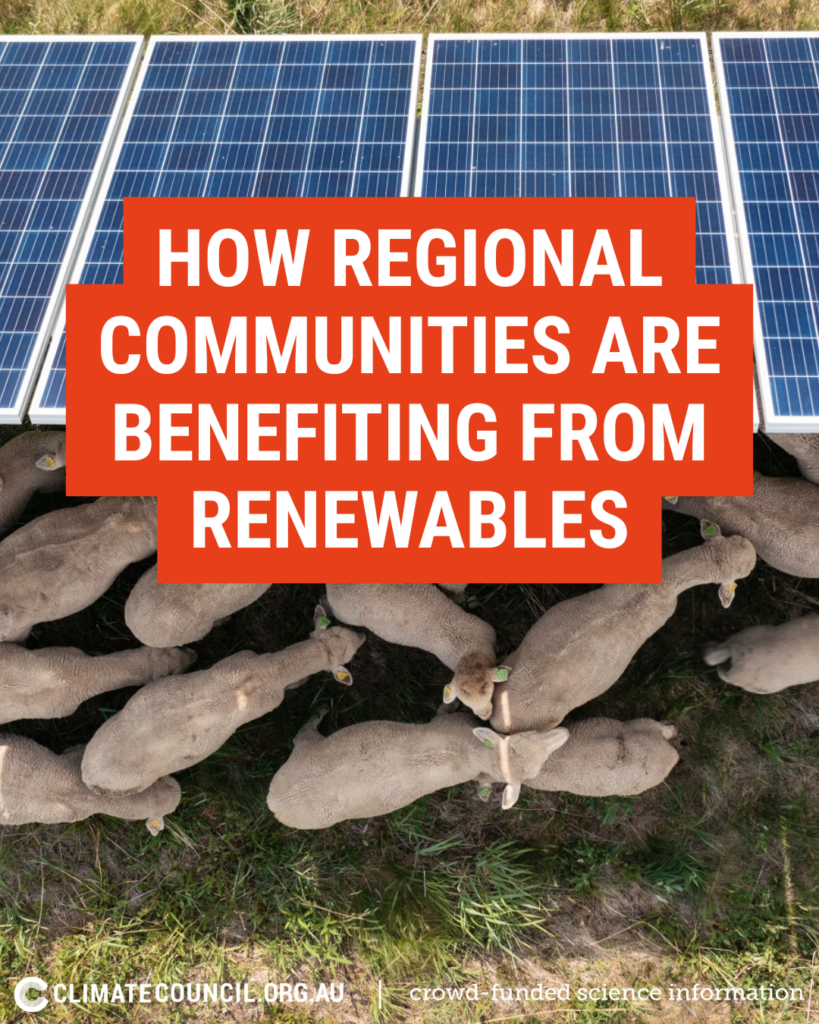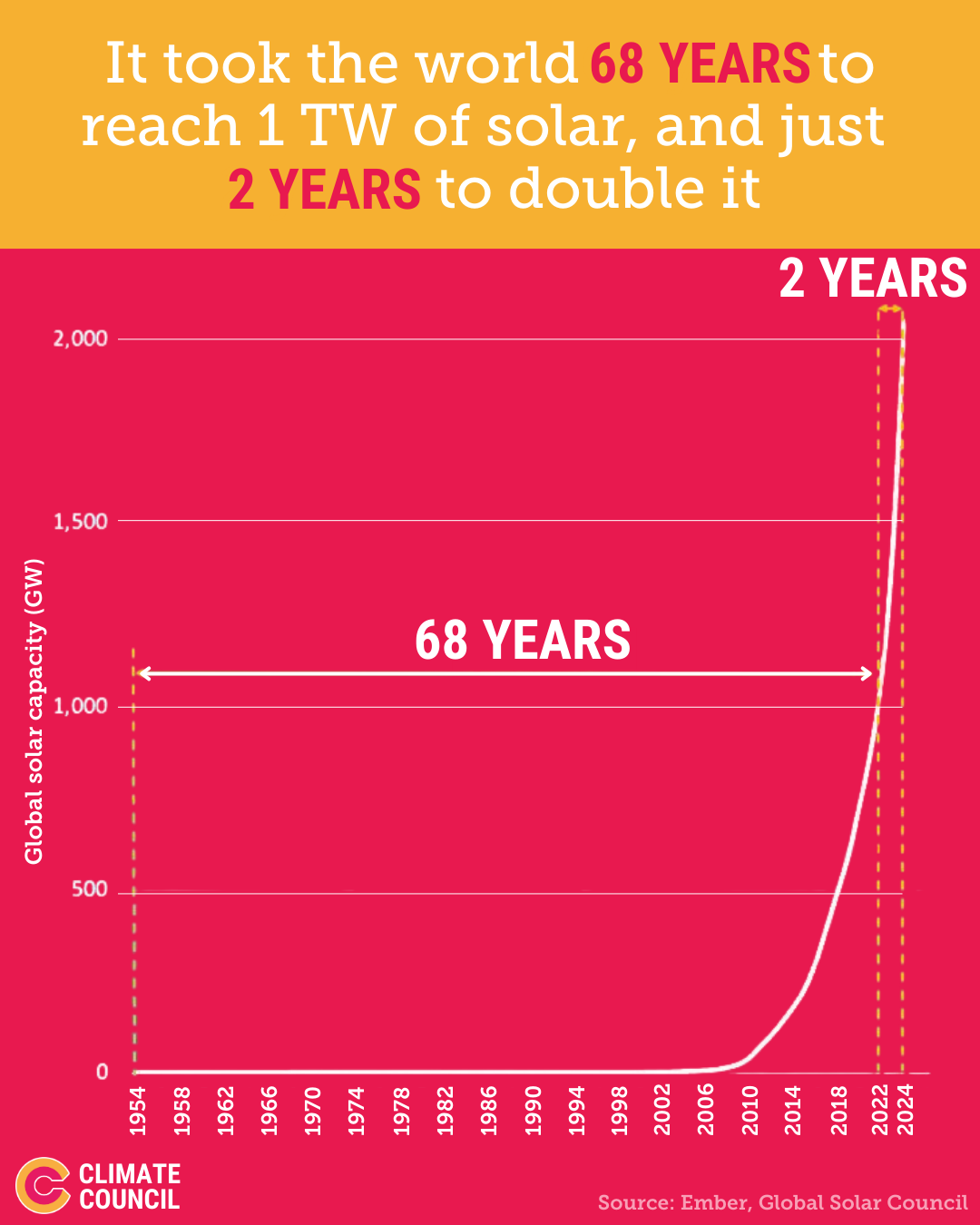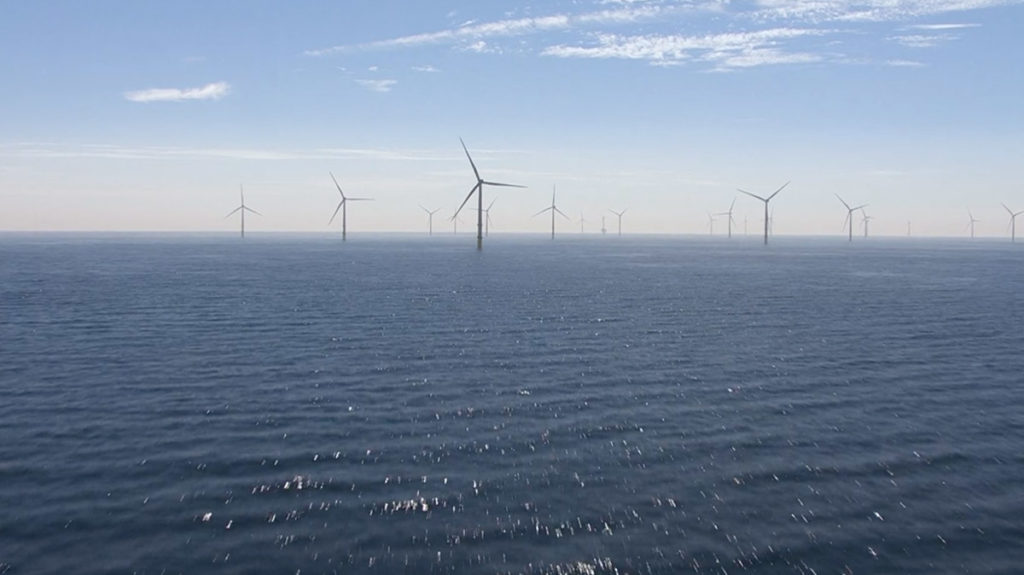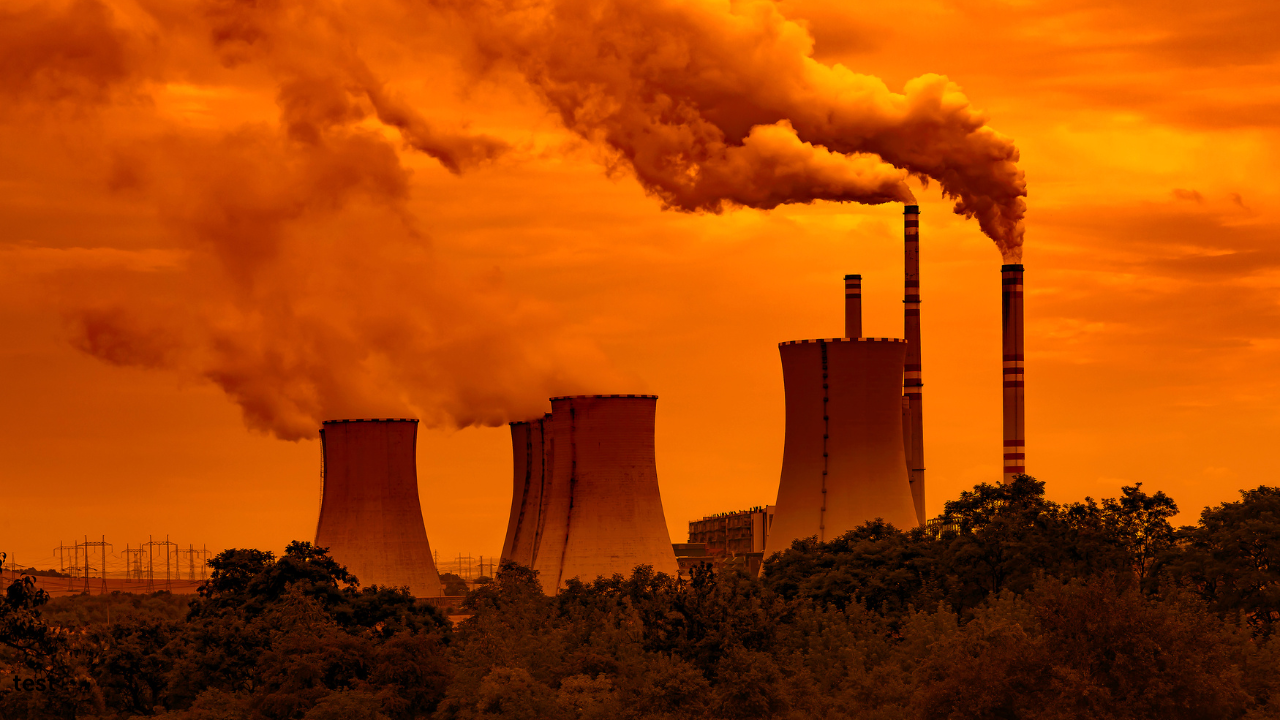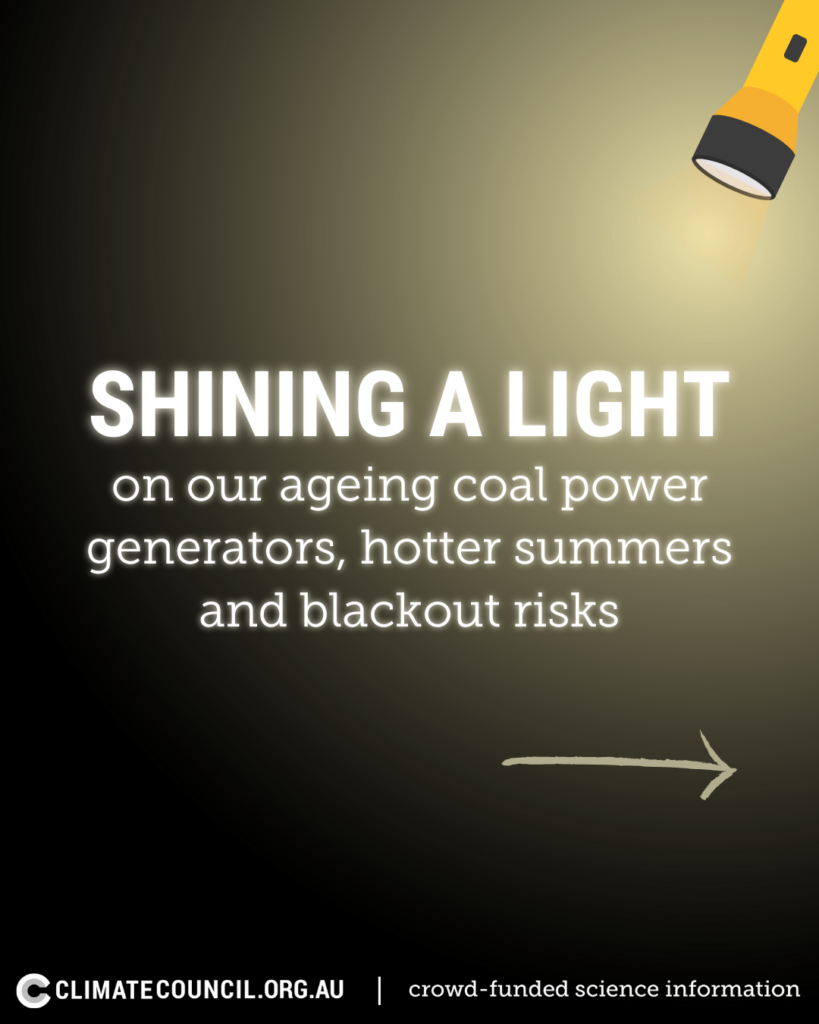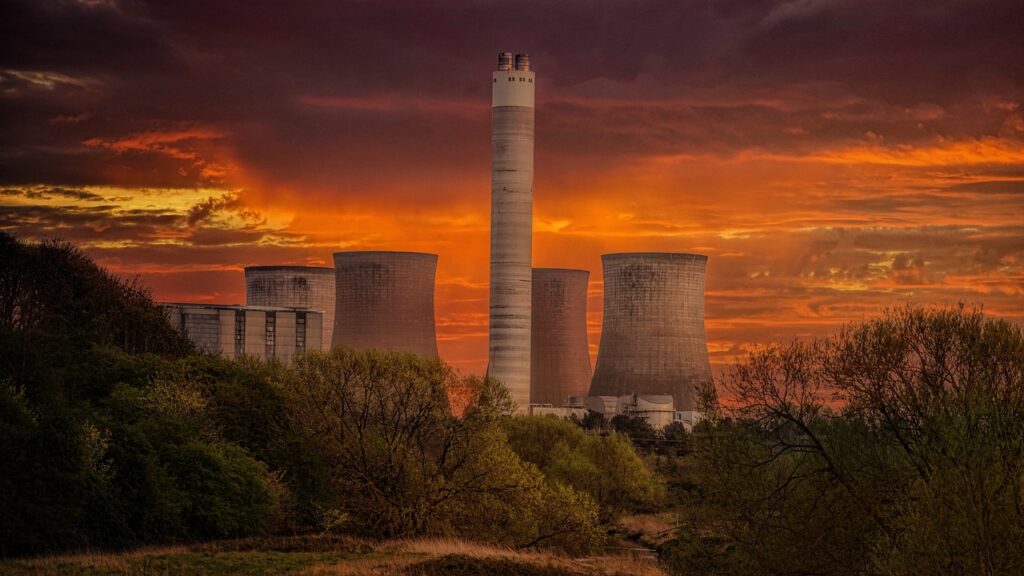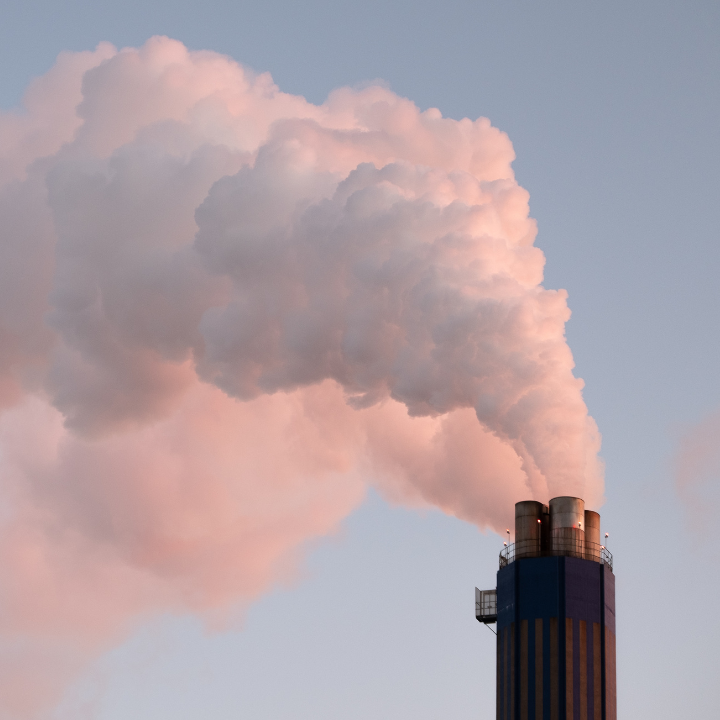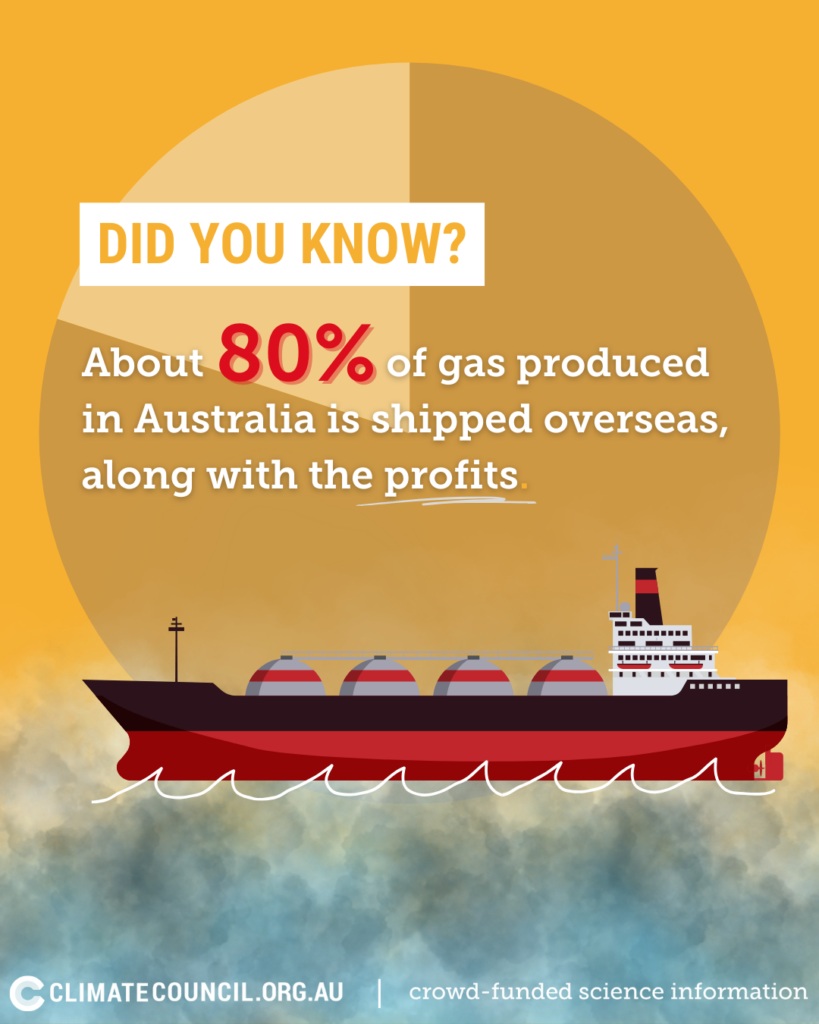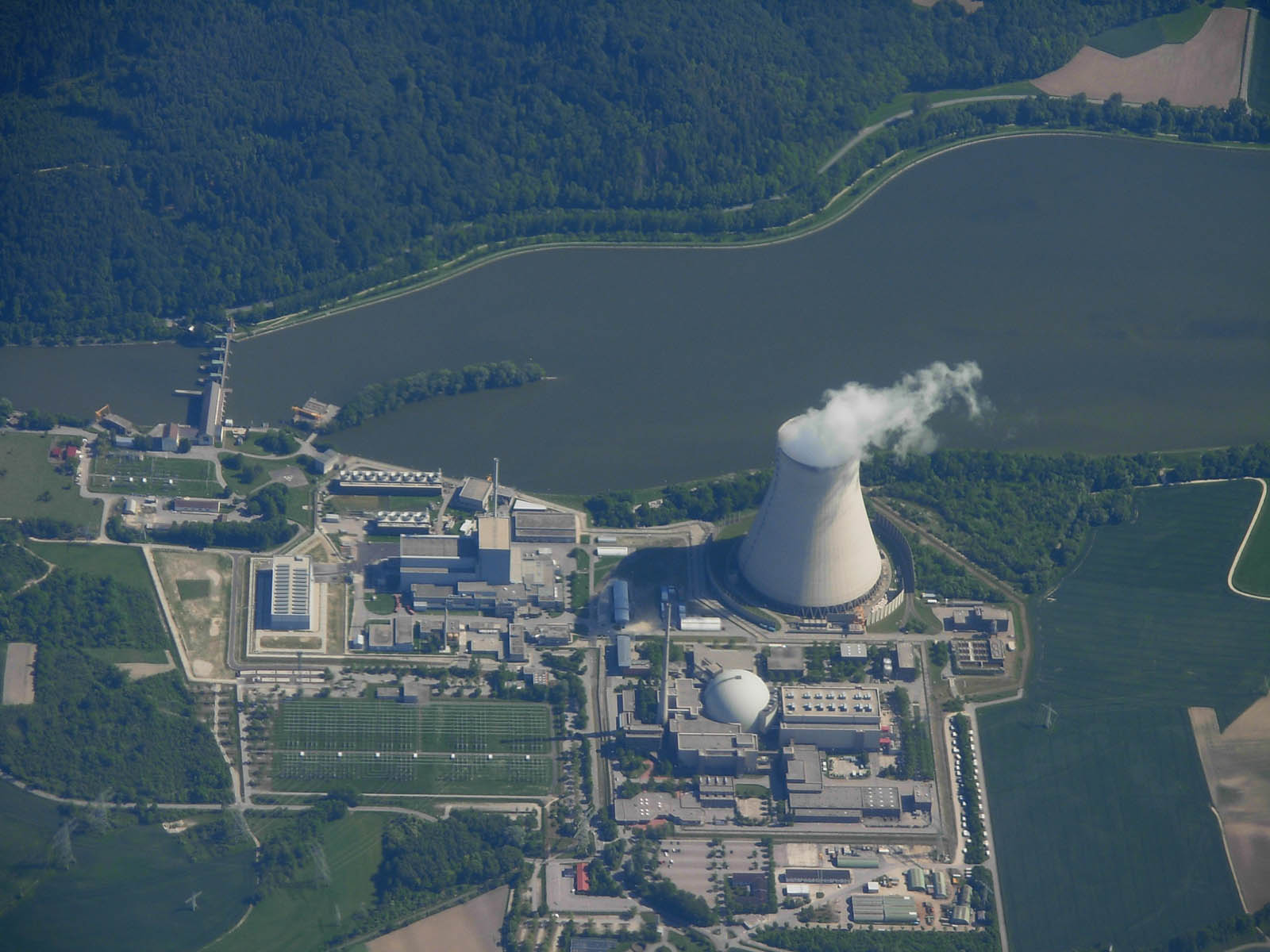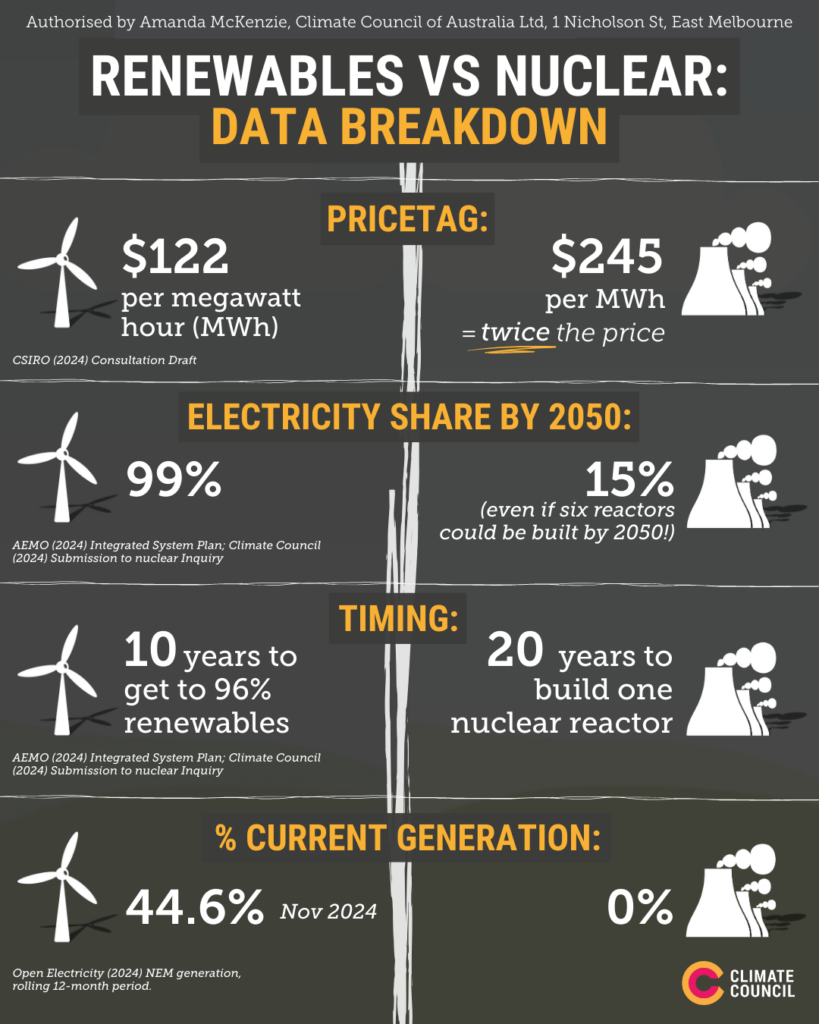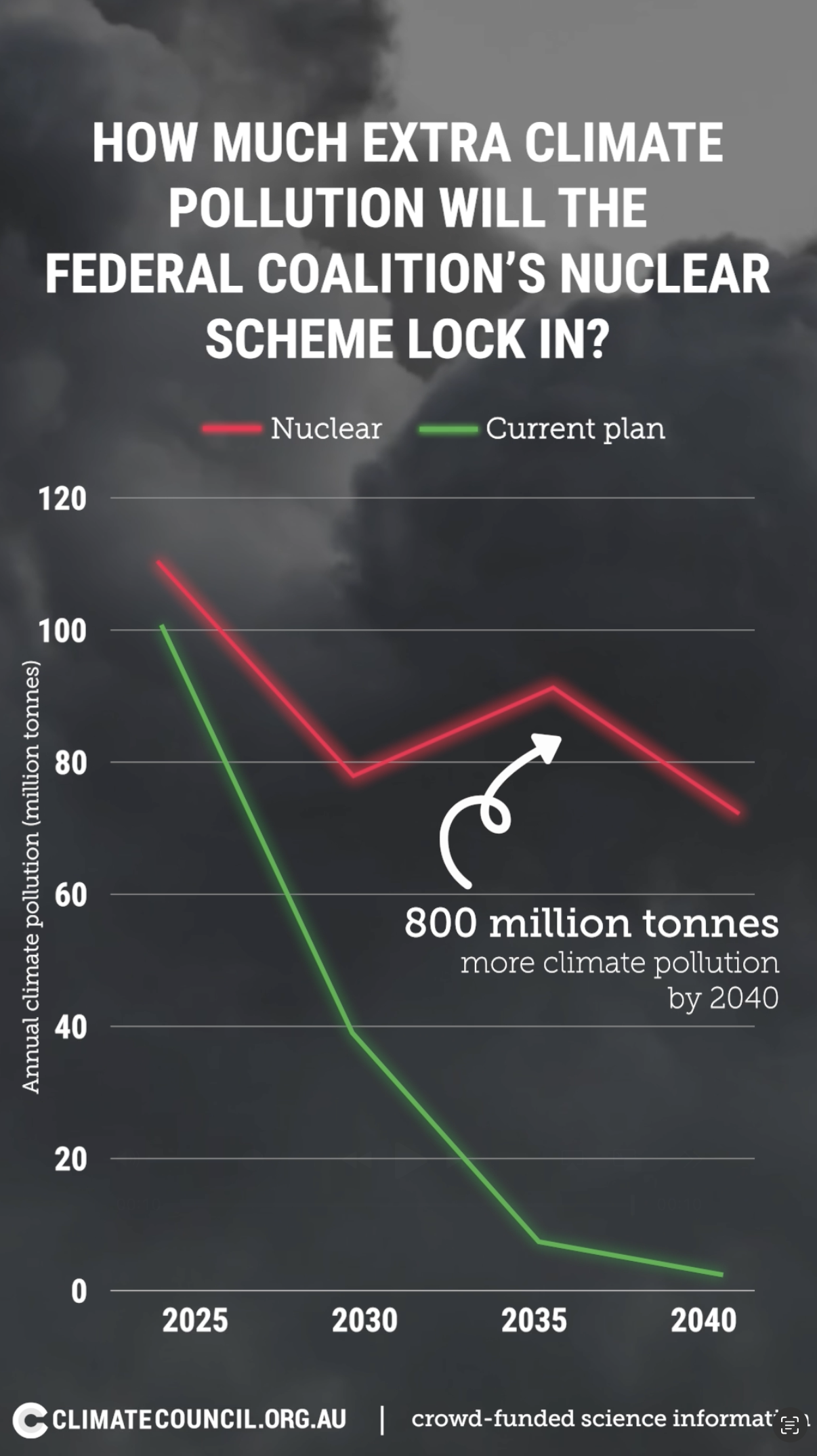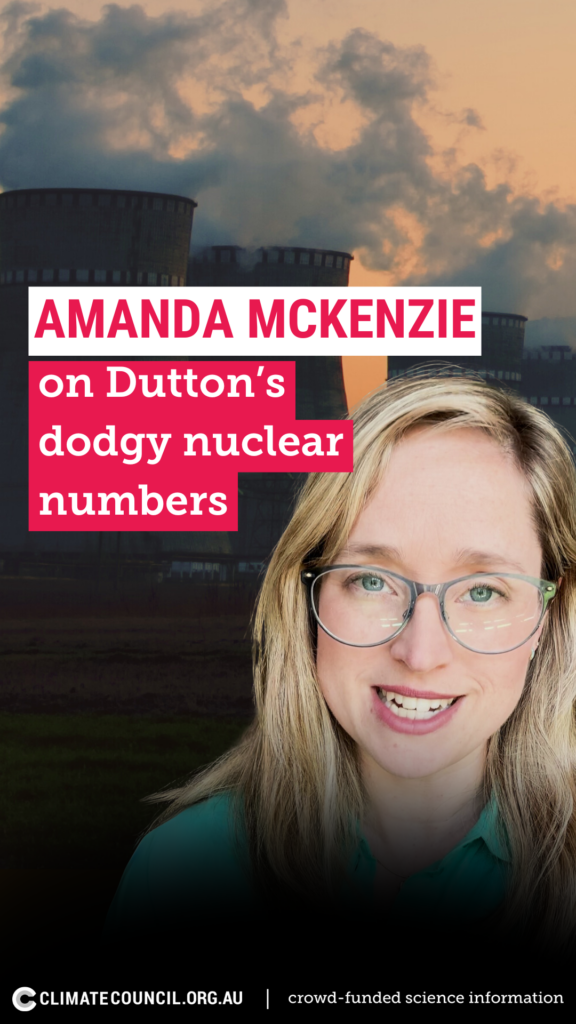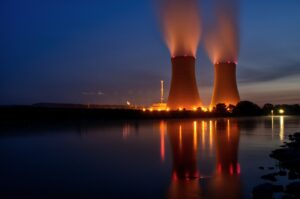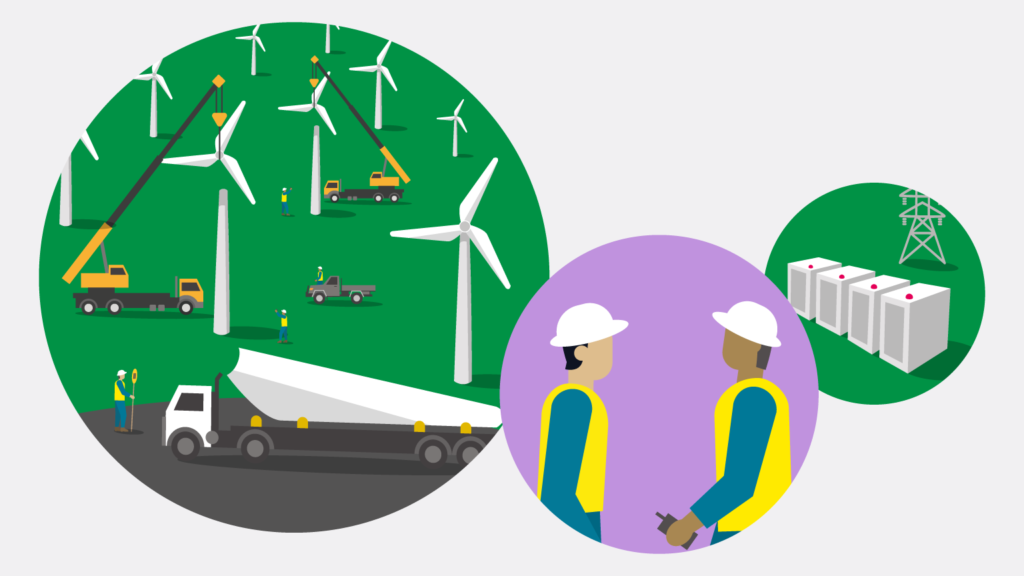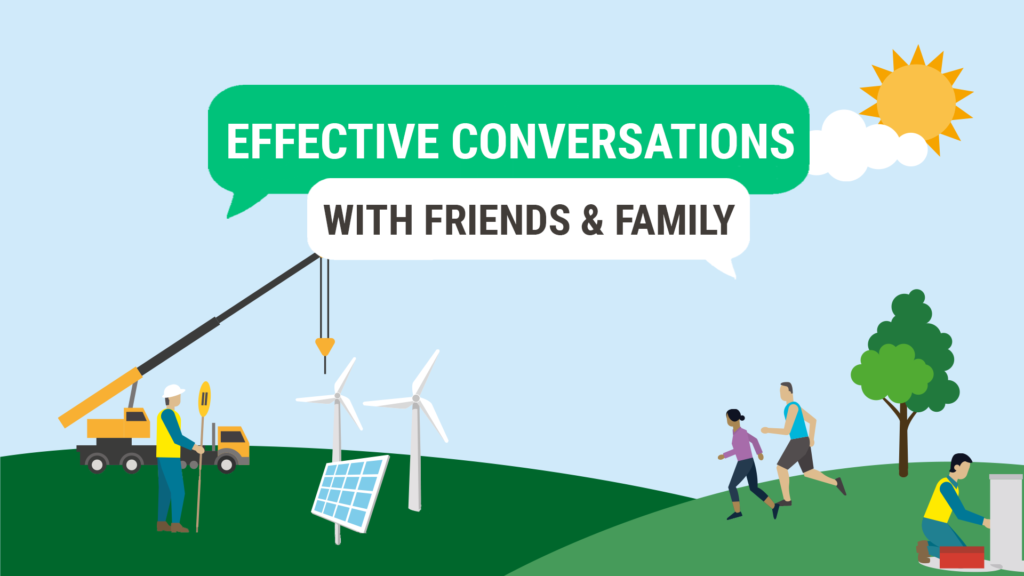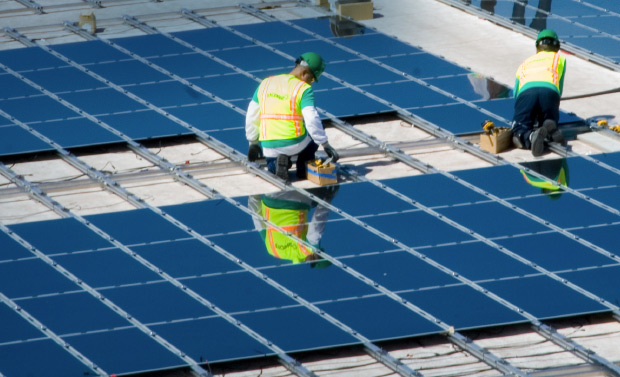It’s democracy sausage season – and the debate about Australia’s future is heating up.
Energy is central to the 2025 Federal Election, and you can’t separate climate change from energy policy. But it can be hard to know how to separate fact from fiction, when there’s so much misinformation kicking around – whether it’s pollies cherry-picking information or the media using complex jargon.
Talking to your friends and family can be one of the most powerful things you can do – alongside voting! Our Election Conversation Guide helps answer some of the most common questions about Australia’s climate and energy future – so you can cut through the spin and speak with confidence.
So get ready to join the conversation, and encourage your fellow voters to support a safer climate future for all Australians.
TOP 10 TIPS FOR HAVING EFFECTIVE CLIMATE CONVERSATIONS
Click on the headings below to reveal more information about each of our tips for having effective climate conversations.
1. Find common values
What is that thing that both you and the person you are talking to care about? THAT is where you start the conversation, by sharing that interest/love/value you hold dearly and explaining how climate change impacts or threatens it, or how climate solutions can help protect it. For example, you could start talking about your shared love of surfing, and explain why climate change is the single greatest threat to our oceans. (The main message here is if we don’t stop polluting and overheating the planet, the things we love are at risk.)
2. Point to progress
This increases people’s confidence in what can be achieved, and prevents them from losing hope. In most cases, we are pressing a case of ‘staying the course’. We want to talk about how we need to ‘keep doing’ xyz, rather than ‘start doing’ xyz. Use examples like:
- 40% of the energy in our national grid already comes from renewable power and storage. We can more than double this in the next five years!
- One in three Australian households already have rooftop solar, and millions more can also get access to this and battery storage.
- Record numbers of people are buying electric vehicles, which don’t pollute.
3. Lead with the solution
Most people want action on climate change but they are seeking a safe way forward. Talking about stopping or ending coal power, for example, immediately raises questions on cost and consequences. But:
“Let’s build up clean energy so… we can phase out polluting energy.”
This defuses the cognitive trigger that directs people to economic and energy security risks.
4. Use trusted messengers
Clear messages, delivered loudly and proudly by trusted voices, over and over will shift the public narrative on climate change.
- Polling shows that trust in governments and institutions is low
- People believe spokespeople from their community and from affected regions
- Examples of trusted messengers in folks’ inner-circles: Family, friends, colleagues
- Examples of trusted messengers in the community: Teachers, scientists, nurses, doctors, farmers, community leaders
5. Do it for the kids
How can we talk about further and faster climate action in ways that appeal to the majority of Australians? This was the subject of a message testing research project by the Climate Council, which found that for most people, the driving reason to act on climate change is to create a safer future for our kids – and all future generations:
- It’s the right thing to do for our children / future generations
- To preserve nature, live in/and enjoy a healthy environment
- Help secure a safer and better future
6. Keep it local
There are incredible stories of climate impacts and solutions from every industry and every corner of the planet, but it’s important to choose examples that are local and relevant to wherever you are, or whoever you are talking to, so your conversation buddy can connect with the issue. Talking about ‘our community’, ‘our region’, or ‘our neighbourhood’ is a lot more compelling than talking about the planet.
7. Talk about “climate pollution”
The Climate Council’s messaging research found that this phrase is much more effective than more jargon-y terms like “emissions reduction” which many people don’t understand.
The term “climate pollution” is:
- Shorthand: Climate pollution is shorthand for: the pollution from coal, oil and gas that causes climate change. People get it instantly.
- Solvable: Pollution is automatically understood to have been caused by humans; and feels solvable.
- Simple: Painting pollution as the problem narrows down our viable solutions to anything that stops pollution or cleans it up. This is a lot simpler than the mire of complex and tangential issues that come up when fixing climate change.
8. Come armed with KEY facts
There’s a whole lot of misinformation out there that gets peddled to confuse, distract or delay action. So point people to trustworthy sources of information (like Australia’s national science agency CSIRO, our nation’s peak professional body for doctors the Australian Medical Association, or the Climate Council!) and refer to one or two facts that are compelling and easy to remember (rather than bamboozling people with lots of numbers).
9. Don’t negate or reinforce a false debate
Repeating a myth, even when trying to rebut it, can unintentionally reinforce it. When Richard Nixon said “I am not a crook,” he didn’t dispel the idea. He reinforced it. Unfortunately for Richard, there was truth to the allegation. Climate myths, on the other hand, are untrue. But the same logic applies: negating them can simply reinforce them. Instead, focus on what IS the case.
10. Tell a story, a human story
People connect with other people, so tell stories about people. For example, explaining how local renewable power projects create local job opportunities for young people in your region, so they don’t have to move away for their career.
DOWNLOADABLE CONVERSATION GUIDE
Click the image below to download a 2-page summary of our 5 most commonly asked climate questions.

CLIMATE PROGRESS, POLITICS & A PIVOTAL ELECTION
Which major party is better on climate policy?
The differences between the two major parties on climate change are stark.
Labor has overseen a 180-degree turn on climate in the last Parliament, with clear progress on renewable power, clean transport and climate targets. The party has credible policies to deliver in the next term, although they still need to commit to phasing out fossil fuels.
The Liberal-National Coalition voted against every law to cut climate pollution in the past three years. Their election policies would turbocharge coal, oil and gas pollution by at least 6.3 billion tonnes, putting more Australians in harm’s way. When comparing our biggest parties, the Climate Council found the Liberal-National Coalition ranks the worst on climate change, while Labor is heading in the right direction, and the Greens have strong climate policies.
What about the crossbench and independents?
In the last term of Parliament, the Australian Greens and many community independents pushed the Labor Government to deliver stronger climate reforms. Independents strengthened the Climate Change Bill 2022 which set Australia’s climate targets, and the Greens secured restrictions on big polluters and limited public funding for coal and gas projects.
A strong, pro-climate crossbench could further strengthen Australia’s climate policy in the next parliamentary term, particularly in the likely event that no party is able to form a majority government.
Australians are worried about cost of living, so shouldn’t we concentrate on that?
Polling has consistently shown that a majority of Australians are concerned about climate change, and want politicians to take action. When so many people are doing it tough, we should be tackling climate change and rising costs of living at the same time.
That’s because climate pollution – from burning coal, oil and gas – is making life more expensive. Insurance costs have jumped 75% in the past decade, in part driven by worsening climate disasters.
Meanwhile, the fastest way to lower household bills and make our communities safer is to keep building more renewable power backed by storage. Already, four million households are benefiting directly from rooftop solar.
Why should people vote for climate action?
The 2025 Federal Election is a critical turning point for climate action. Every decision made in the next term of Parliament will set Australia’s climate trajectory for decades to come, and determine whether we can secure a safer future for our kids.
This election, you can use the power of your vote to support parties and candidates who are committed to keeping our momentum going. We need to avoid any backsliding into climate denial, delay, and distraction. After years of “climate whiplash”, where Aussies have been hurled from flooding rains to fierce fires and back again, it’s clear our political leaders need to turbocharge climate action.
So this election, let’s vote like our kids’ future depends on it. Because it does.
How is climate pollution making extreme weather events worse?
Digging up and burning coal, oil and gas is overheating our planet and driving worsening extreme weather events like bushfires, floods and cyclones. Burning coal, oil and gas releases climate pollution, which stays in the atmosphere like a thick blanket, and causes the earth to retain more heat from the sun. 2024 was the hottest year on record globally, and in Australia we just experienced our hottest spring and summer on record.
Disasters like the Black Summer bushfires and the floods of 2022 will become commonplace unless we rapidly build more clean energy backed by storage and stop burning coal, oil and gas.
Does anything that we do matter if Trump is in charge of the US?
US president Donald Trump can’t change the way the wind is blowing on clean energy. The global shift to renewable power backed by storage is a megatrend that’s now unstoppable.
As Trump dials up the climate delay and denial, Australia can keep dialling back the climate pollution that’s overheating our planet and putting our own lives at risk. Continuing to cut climate pollution is in our national interest as it will keep us and our kids safer.
REPORTS & SHARABLE CONTENT
POWER BILLS
Why are power bills going up?
In short – because we’re still relying on polluting fossil fuels!
There’s a lot of misinformation out there about what’s to blame for high electricity costs, but the truth is, unreliable coal and expensive gas are the main culprits.
Rising power bills are driving more and more Australians to take control of their power bills with rooftop solar, and a home battery. More than 4 million households have solar panels now, and collectively they’re saving $3 billion a year.
The fastest way to bring down our power bills, and replacing ageing coal-fired power stations, is building more renewable energy backed by storage.
Will more renewables bring down power bills?
Coal-fired power stations are on the way out, and we need to replace them fast – before the lights go out and our kids’ futures goes up in smoke. CSIRO studied all the options, and found the lowest-cost way to do that in Australia is with solar and wind, backed by storage vs the highest-cost option, which is nuclear. We can’t say for sure that power prices will come down, because there are countless factors that impact our bills, like inflation. But we do know that renewables backed by storage are our best shot at bringing costs down.
More renewable energy is the fastest way to get power bills in check, the quickest way to replace coal as it retires, and the only way to secure a safer future for our kids and communities.
REPORTS & SHARABLE CONTENT
RENEWABLE POWER
Can Australia reliably meet our energy needs with renewable power plus storage?
Already, about 40% of Australia’s electricity comes from solar, wind and hydro power. That’s doubled in the past six years, and it’s expected to reach 82% within the next five years.
Our national energy market operator (AEMO) is confident that a mix of renewable power, backed up by storage (including massive batteries and hydro power) and firming generation, can power our lives and businesses 24/7.
What role can batteries play?
Australia is one of the sunniest countries in the world, and one of the windiest. Battery storage – whether it’s at the household, community or national level – can soak up renewable power when it’s abundant so we can use it whenever we need it.
Battery storage is booming in Australia: with capacity more than doubling in the past three years. It is expected to grow at least seven-fold by 2030 so we can use renewable power 24/7.
How does offshore wind impact the environment?
The greatest threat to nature, and all living things, is accelerating climate change.
Any type of development has some impact on the environment, but offshore wind can be built safely and can improve nature if it’s done well.
While offshore wind is a new industry for Australia, it has been around for about 35 years, and we know from international experience how to build it safely with a minimal impact on the surrounding environment.
Some people say renewables will use a lot of land – is that true?
It’s a common misconception, because renewables can happily co-exist with agriculture. Many Australians are farming with renewables and transmission today and reaping the benefits.
Building enough wind and solar to supply all of Australia’s domestic energy needs – including all transport, heating and industry that’s fuelled by gas, petrol or diesel – would take up just 1,200 square kilometres of land – that’s equivalent to around 0.02% of our country. In comparison, agriculture uses more than 55% of our land.
Where is the world heading on energy?
Globally, investment in clean energy has overtaken fossil fuels, and will be nearly twice the investment still being made in coal, oil and gas in 2024. This is a historic mega-trend, and it’s a big economic opportunity for Australia which is the sunniest and one of the windiest countries on earth.
In contrast, there are fewer nuclear power stations operating in the world today than there were in 2000 – providing less than 10% of the world’s electricity. Renewables are already providing more than three times that and are the fastest growing source of power in human history.
REPORTS & SHARABLE CONTENT
COAL
Why is coal power getting more unreliable?
The majority of Australia’s coal capacity is more than 40 years old, and its reliability has dropped dramatically.
Coal outages are a primary driver of black out risks in Australia and have also contributed to some of the most severe price spikes we’ve experienced in recent years.
Building more renewable power backed by storage is the fastest way to meet our energy needs before more coal generators shut down.
But isn’t China still building coal?
Yes, and China is also building more solar and wind power than the rest of the world combined. According to the International Energy Agency, global investment in clean energy is approaching $US2 trillion – almost double what’s being spent on polluting sources like coal, oil and gas. So it’s clear which way the world is heading, including China.
REPORTS & SHARABLE CONTENT
GAS
Does Australia need more gas?
Gas is a polluting fossil fuel, so any expanded or new gas projects in Australia will increase climate pollution and fuel worsening climate-fuelled disasters like bushfires, floods and cyclones.
More gas is a bad bet against our kids having a safer future and enjoying a thriving, clean economy. With coal-fired power stations on the way out, what we actually need is a plan to get more solar and wind, backed by storage, online quickly. That will ensure the lights stay on, and help protect our kids.
How much does gas cost?
Gas used to be cheap, but now it’s one of the most expensive sources of energy in Australia. That’s because we dug up all the gas that was easier and cheaper to extract. On top of that, 80% of all Australian gas is used for overseas exports.
Time and time again, experts have concluded that renewable power is both the cheapest and cleanest form of energy available today for Australia. So what does that mean for Australian households and businesses? Get off gas as quickly as you can (by electrifying) and when it comes to adding new energy supply we should be prioritising renewable energy backed by storage as the cheapest and cleanest option available.
Is a gas reservation policy a good thing?
It’s true that Australia has a gas export problem. We have plenty of gas (we’re one of the biggest gas exporters in the world, after all).
Since Australia became a major gas exporter in 2015, gas prices have more than tripled. Plus, experts have warned that Australia may soon experience a domestic gas shortage – despite producing five-times more gas than we actually use. That’s because 80% of our gas is used for overseas exports, leaving domestic users high and dry.
Keeping more Australian gas at home is a good way to meet our domestic needs. At the same time we need to reduce our gas use as much as possible. This is where the Federal Coalition’s gas reservation policy goes wrong – by also promising to build more gas projects and add to our climate pollution woes. A genuine plan for Australia’s energy future needs to focus on powering past polluting gas.
REPORTS & SHARABLE CONTENT
nuclear
Is nuclear energy a climate solution?
Nuclear energy would be a climate disaster for Australia because it would lock in two billion more tonnes of climate pollution from coal and gas.
Australians are already being pummelled by worsening climate disasters, and we can’t afford to wait 15-20 years for nuclear reactors to be built. We need a plan to cut climate pollution now and protect our kids’ future, not a delay tactic that will put more Australians in harm’s way.
The Coalition says it can build nuclear reactors by 2035 – is that true?
Trusted, independent experts (including CSIRO) estimate that it would take at least 15-20 years to build a single nuclear reactor in Australia, or 2040 at the earliest. Meanwhile, all Australia’s coal-fired power stations are due to close before a single watt of nuclear power could enter our system.
We need to bring on new sources of energy right now – like solar and wind, backed by big batteries – before the lights go out and our kids’ future goes up in smoke.
How much will nuclear reactors cost?
Australia’s national science agency, CSIRO, has found that nuclear energy projects would cost twice as much as renewable power backed by storage. That bad news for our bills. Independent analysis shows that nuclear energy could increase electricity bills by $665 on average, and $972 for a family of four.
Around the world, nuclear projects are notorious for running overtime and over-budget. For example, the UK’s Hinkley Point C nuclear energy facility is costing three times more than promised ($90 billion) and running 14 years late (2031 vs 2017). Imagine how long it might take in Australia, where we’d be starting from scratch?
How likely is a nuclear disaster in Australia?
Radiation from major nuclear disasters such as Chernobyl and Fukushima have impacted hundreds of thousands of people and contaminated vast areas that take decades to clean up.
The risk of such disasters in Australia can’t be ruled out, and many of the proposed nuclear sites are already in disaster-prone regions experiencing escalating heatwaves, bushfires, storms and floods – as well as earthquakes. Even when a nuclear reactor operates as intended, it creates an expensive long-term legacy of site remediation, fuel processing and radioactive waste storage.
Why would we risk any of that when we don’t have to?
Do nuclear reactors require much water?
Nuclear reactors require massive amounts of water. For example, a typical nuclear facility uses about 2,000 litres of water per second, equivalent to the daily water use of four households.
With increased risk of droughts in Australia, the water used by nuclear reactors is a significant concern. At times when water supply is tight, it’s also unclear how the needs of nuclear reactors will be balanced against those of households and farmers.
REPORTS & SHARABLE CONTENT
Authorised by Amanda McKenzie, Climate Council of Australia Ltd., 1 Nicholson St, East Melbourne

